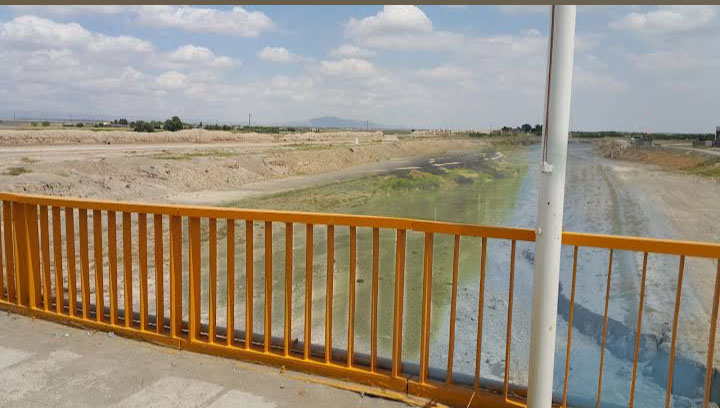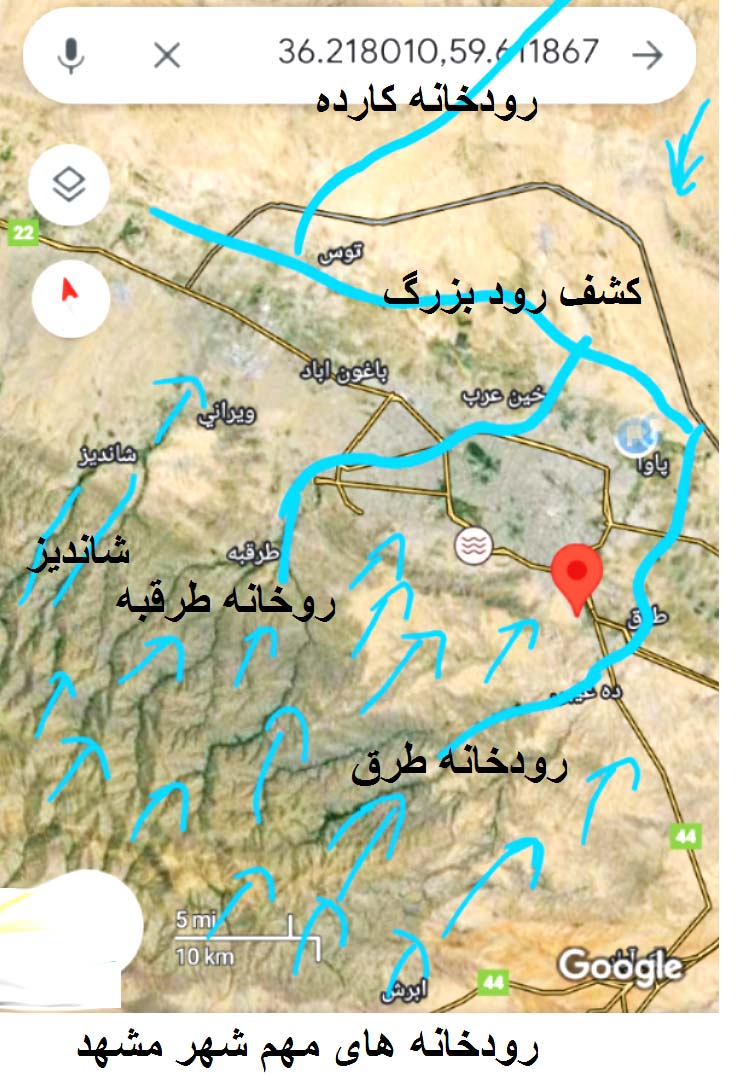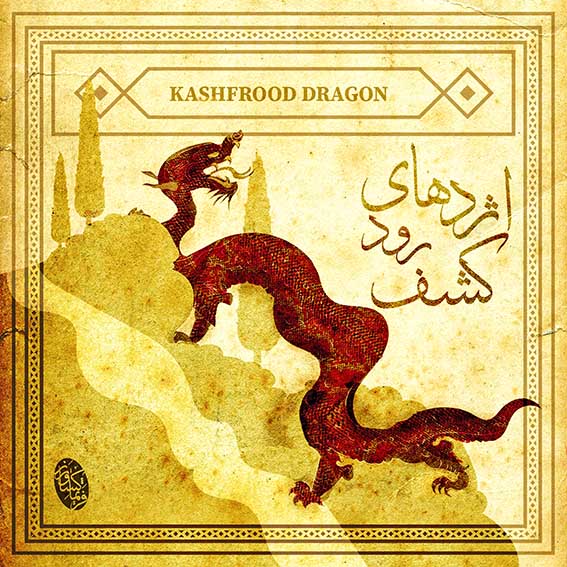
Kashafrud river - رودخانه کشف رود
اینجا درباره رودخانه کشفرود ایران مینویسم
Kashafrud river - رودخانه کشف رود
اینجا درباره رودخانه کشفرود ایران مینویسمکشفرود شاهنامه فردوسی
همه آنچه که درباره کشفرود مینویسند آنی نیست که میدانیم.
کشفرود، آنچه که فردوسی به آن اشاره کرده رودی است که از جای پل فردوسی و همین جا که آرامگاه فردوسی هست جاری میشه.

تصویر این رودخانه مانند اژدهای بزرگی بوده که وقتی یک بار طغیان میکنه، در شاهنامه فردوسی با اسم کاسه رودخانه بیان میشه. شاهنامه فردوسی اون رو به یک اژدهای سرکش توصیف میکنه.
چنان اژدها کوز رود کشف
برون آمد و کرد گیتی چو کف
فردوسی که این رودخونه رو اینطوری با اژدها توصیف میکنه نقاشها دست به قلم میشن و هر کس اون رو به یک طریق تصویر میکنه.
عکس رودخانه کشفرود رو توی نقشه اینطوری ببینید:

رودخانه کشفرود دو آبریز بزرگ کارده و طرقبه دارد که از بقیه مهمترند.
همین رودخونه رو وقتی که تمثیلی نقاشی میکنند میشه اژدهای رودخانه کشف که عکس بعدی میشه:

حالا ما میخوایم این رودخانه رو در مسیر کاسه سفالی طوری که داره جاری ببینیم.
برای این کار لازمه که این شهرکهای صنعتی که یک در کنار این رود تشکیل شدند و آب این رودخانه رو میگیرند الزاماتی تعیین کنیم.
وقتی میخوایم این الزامات را تعیین کنیم فقط یک شهرک صنعتی چرمشهر نباید مد نظر ما باشه، شهرک صنعتی فردوسی و شهرکهای حتی مسکونی هاشمی نژاد و غیره که در کنار این رودخانه تشکیل شدند باید قوانینی را رعایت کنند، و تصفیه خانههایی داشته باشند که ما وقتی رودخانه رو اجازه میدیم از کوه پایهها جاری بشه تمیز بودن آن به چشم بیاید.
__________________
Not everything written about the Kashafrud is what we know.
Kashfrud, what Ferdowsi referred to, is a river that flows from the place of the Ferdowsi Bridge and right where Ferdowsi's tomb is.
The image of this river is like a large dragon that when it overflows, is described in Ferdowsi's Shahnameh as the bowl of the river. Ferdowsi's Shahnameh describes it as a rebellious dragon.
So the dragon came out of the Kashfrud and made Giti like foam. When Ferdowsi describes this river like this with a dragon, painters take up their pens and everyone depicts it in the same way.
See the picture of the Kashfrud River on the map like this:
The Kashfrud River has two large catchments, Kardeh and Torqebah, which are more important than the others.
When they paint an allegory of this river, it becomes the dragon of the Kashf River, which becomes the next picture:
Now we want to see this river flowing in the path of the clay bowl.
For this, it is necessary to set requirements for these industrial towns that were formed next to this river and that receive the water from this river.
When we want to set these requirements, we should not only have in mind the industrial town of Charmshahr, the Ferdowsi industrial town and even the residential towns of Hasheminejad, etc. that were formed next to this river must comply with certain rules, and have treatment plants that will make it clear that the river is clean when we allow it to flow from the mountain of the foundations.